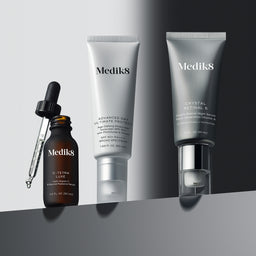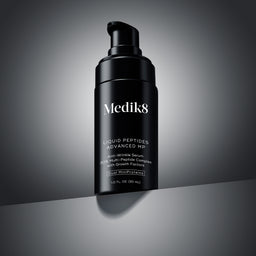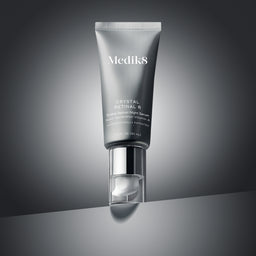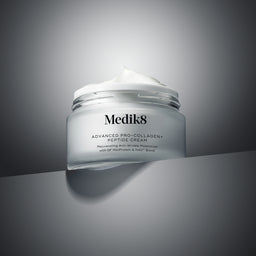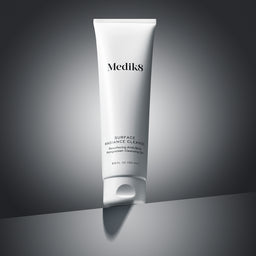Oily skin can feel like a constant balancing act. Shine builds up throughout the day, makeup doesn't stay put, and breakouts seem to linger longer than they should. Behind the scenes, excess sebum production is often to blame. While sebum plays an important role in keeping skin healthy and protected, too much of it can lead to clogged pores, blemishes and uneven skin texture.
The key to managing oily skin is consistency and care. That means choosing ingredients that support the skin barrier while helping to regulate sebum. With the right products for oily skin, it’s possible to reduce excess shine, support long-term clarity and maintain a more even texture day to day.
Identifying Oily Skin
Oily skin is more than just a midday shine. It’s a skin type defined by an overproduction of sebum, which influences everything from pore visibility to how easily the skin becomes congested. Knowing what oily skin looks like helps you choose better ingredients, avoid unnecessary irritation and improve how your skin responds to treatments.
Characteristics of Oily Skin
There are a few consistent signs that point to oily skin. You might notice a greasy feeling on the skin, particularly in the T-zone. Makeup tends to slip or break apart throughout the day. Pores may appear more visible, and blackheads or blemishes are often more frequent. While these features are common, they don’t always mean the skin is unhealthy. They simply reflect how your skin produces and manages oil.
Oily vs. Combination Skin
It’s easy to confuse oily skin with combination skin. The difference often lies in distribution. With oily skin, sebum levels are elevated across most of the face. With combination skin, oiliness is concentrated in specific areas like the forehead and nose, while the cheeks may feel dry or normal. Understanding this distinction helps you choose products for oily skin more effectively without over-drying areas that need a gentler approach.
Best Skincare Ingredients for Oily Skin
Ingredients matter when building a routine around oily skin. Some work to regulate oil production, others target blemishes or help clear pores. Using the right actives can make a visible difference in how your skin behaves over time.
The Role of AHAs and BHAs
Alpha hydroxy acids (AHAs) and beta hydroxy acids (BHAs) are effective exfoliants that help resurface skin and clear buildup inside pores. Salicylic acid, a BHA, is especially useful for oily skin as it breaks down excess sebum and penetrates clogged pores. Glycolic and lactic acids, both AHAs, help smooth surface texture and promote a brighter-looking complexion.
For those with oily or blemish-prone skin, Medik8’s Press & Clear is a daily exfoliating tonic that uses 2% encapsulated salicylic acid, along with tranexamic acid, to help reduce visible surface imperfections and refine the look of pores. Clinical studies show it supports clearer-looking skin in as little as seven days, and it's been formulated to be non-drying and comfortable for even sensitive skin types. Unlike many acid-based toners, Press & Clear has also been shown to improve skin barrier function over time.
For those focused on skin texture, brightness or early signs of aging, an AHA-based product like Sleep Glycolic™ may be more appropriate. This at-home peel uses 10% glycolic acid in a time-release format, gradually delivering exfoliation overnight to support a visibly smoother, more even-toned complexion by morning. It’s intended for use a few times per week and can be especially useful for skin that looks dull or feels uneven due to congestion.
Used thoughtfully, AHAs and BHAs can both play an important role in routines targeting oiliness, blackheads, enlarged pores and rough texture. The key is choosing the right formula and frequency based on your skin’s tolerance and needs.
Exploring PHAs for Gentle Care
Polyhydroxy acids (PHAs) offer gentle exfoliation with added hydration, making them a smart choice for oily skin that leans sensitive. They work on the skin’s surface to improve tone and texture without the risk of over-exfoliating or causing dryness.
One PHA-based option is Press & Glow™, a daily exfoliating tonic formulated with gluconolactone. This ingredient helps to remove dead surface cells gradually, promoting better absorption of active ingredients like vitamin A and C. In clinical studies, Press & Glow has been shown to improve visible skin texture, enhance overall radiance and maintain comfort, even with twice-daily use.
Its low-irritation profile makes it suitable for those who want to incorporate regular exfoliation into their routine without disrupting the skin barrier. For oily skin that may not tolerate AHAs or BHAs well, PHAs like those in Press & Glow can offer a more balanced approach.
Skincare Product Recommendations for Oily Skin
Choosing the right products for oily skin starts with understanding what your skin needs at each step of the routine. That includes balancing oil production, clearing congestion and maintaining hydration without heaviness.
Foaming Cleansers
A foaming cleanser helps remove excess oil without stripping the skin. Look for gentle, non-drying formulas that support the skin barrier while thoroughly cleansing the surface. For recommendations, explore our cleansers designed for oily skin.
Targeted Treatments and Serums
Lightweight serums with oil-regulating ingredients like retinol, niacinamide or azelaic acid can help keep skin clear and balanced. Spot treatments with salicylic acid or sulfur may also be helpful for areas that need targeted attention.
Moisturizers for Oily Skin
Even oily skin needs moisturizer. Skipping it can cause the skin to produce even more oil in response. The best moisturizer for oily skin is lightweight, non-comedogenic and designed to hydrate without leaving behind residue. Ingredients like ceramides, niacinamide, and hyaluronic acid help maintain moisture without clogging pores.
Sunscreens and Additional Products
SPF is a must, even for oily skin. Choose a sunscreen that is oil-free, non-comedogenic and comfortable enough to wear daily. Avoid formulas that leave behind a greasy finish or heavy feel.
Skincare Routine Tips for Oily Skin
A consistent skincare routine helps keep oily skin in balance. The goal is to control oil without disrupting the skin’s natural defenses. Every step should support clarity, hydration and comfort.
Importance of Gentle Cleansing
Cleansers that are too harsh can strip the skin, leading to rebound oiliness. A gentle, soap-free cleanser keeps the skin clean without overcompensating. Use lukewarm water and avoid aggressive scrubbing, which can aggravate oil production.
Exfoliation and Toner Use
Exfoliating two to three times a week helps remove buildup and keep pores clear. Use chemical exfoliants with AHAs or BHAs instead of physical scrubs. Alcohol-free toners with calming and clarifying ingredients can also help prep the skin without drying it out.
Managing Acne and Breakouts
For oily skin that’s prone to breakouts, targeted treatments can help. Ingredients like salicylic acid or benzoyl peroxide help reduce congestion and improve clarity. Use them sparingly and support the rest of your skin with hydrating and barrier-strengthening products.
← Older Post Newer Post →
